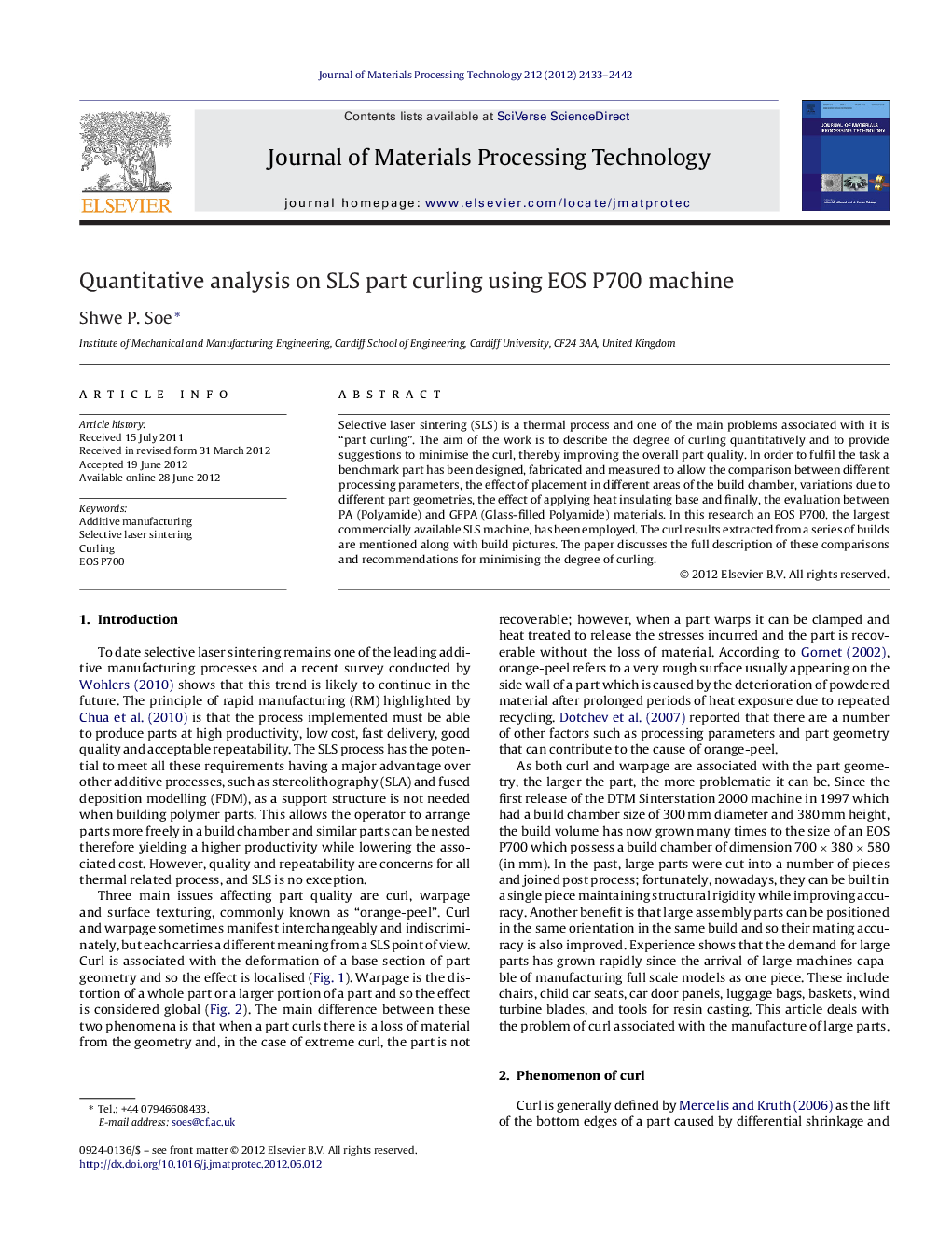| Article ID | Journal | Published Year | Pages | File Type |
|---|---|---|---|---|
| 798190 | Journal of Materials Processing Technology | 2012 | 10 Pages |
Selective laser sintering (SLS) is a thermal process and one of the main problems associated with it is “part curling”. The aim of the work is to describe the degree of curling quantitatively and to provide suggestions to minimise the curl, thereby improving the overall part quality. In order to fulfil the task a benchmark part has been designed, fabricated and measured to allow the comparison between different processing parameters, the effect of placement in different areas of the build chamber, variations due to different part geometries, the effect of applying heat insulating base and finally, the evaluation between PA (Polyamide) and GFPA (Glass-filled Polyamide) materials. In this research an EOS P700, the largest commercially available SLS machine, has been employed. The curl results extracted from a series of builds are mentioned along with build pictures. The paper discusses the full description of these comparisons and recommendations for minimising the degree of curling.
► I designed the benchmark part to quantitatively measure the curling induced in the SLS process. ► I employed the EOS P700 machine to conduct the research on PA2200 and PA3200 materials. ► The degree of curling is found to be affected by powder bed temperature, the position of the part in the build chamber, part geometry, part orientation and the type of material. ► I discussed the relationships between these factors and suggested how to minimise the curling. ► I proposed the best orientation for large SLS parts.
